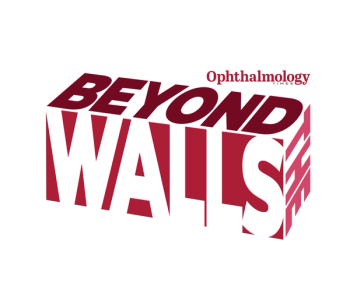
- Ophthalmology Times: September 15, 2021
- Volume 46
- Issue 15
Corneal mechanical sensitivity in individuals with chronic pain
A cross sectional study investigated how chronic pain conditions outside of the eye impact corneal sensitivity.
This article was reviewed by Brandon Baksh, BA, and Anat Galor, MD, MSPH
Chronic pain is a common and often debilitating condition. Chronic pain syndromes can be localized to the head and face, and involve the trigeminal system, for example in migraine and trigeminal neuralgia, explained Brandon Baksh, BA.
He continued, saying chronic pain syndromes can also be widespread, such as in fibromyalgia, or localized to areas outside the head and face, such as back pain, and that nerve abnormalities have been linked to chronic pain syndromes.
“As eyecare providers,” he said, “we can assess this link between nerve abnormalities and chronic pain.”
He pointed out that corneal sensitivity can be measured in the office.
Study purpose
Corneal sensitivity is altered in several eye conditions. However, its relationship with chronic pain conditions outside of the eye is not clear.
To learn more about how chronic pain conditions outside of the eye impact corneal sensitivity, the authors investigated whether individuals with chronic trigeminal pain conditions have differences in corneal sensitivity compared with individuals with chronic pain conditions not localized to the trigeminal system.
Their hypothesis was that patients with chronic trigeminal pain have differences in corneal mechanical detection threshold compared to those who have chronic pain conditions that are not localized to the trigeminal system.
Methods
A cross sectional study was performed of South Florida veterans with chronic pain conditions (>3 months duration) seen at an eye clinic.
The main independent variables were pain diagnoses and locations, as recorded by the participants through a survey.
The main dependent variable was corneal mechanical detection threshold, which was assessed using a modified Belmonte aesthesiometer.
To assess confounding variables, data was collected on demographics, dry eye symptoms and signs, mental health indices, systemic co-morbidities, and quality of life indices.
Individuals were split into two groups based on their pain diagnosis:
· Group 1 (Trigeminal pain) – chronic pain conditions that involved the trigeminal system
- Migraine
- Burning mouth syndrome
- Trigeminal neuralgia
- Trigeminomandibular disorder (TMD)
· Group 2 (Other pain) – chronic pain conditions that did not localize to the trigeminal system
- Back pain
- Knee pain
Assessing corneal mechanical threshold
Corneal mechanical threshold was assessed with a modified Belmonte aesthesiometer:
- Pulses of air at room temperature were used, on the right eye.
- Started at 10mL/min, and waited 15 seconds between pulses
- Increased by 10mL/min, until the patient could feel the pulse
- This was repeated a 2nd time and the mean was used
- If the difference between the 2 trials was > 20, a 3rd reading was done
Baksh noted that a lower detection threshold using the Belmonte aesthesiometer meant a higher corneal sensitivity.
Statistics
Continuous variables were assessed via the independent t-test. Correlations were assessed via Pearson r coefficient, and categorical variables were assessed via Chi-square test.
All reported p-values are two-tailed and p<0.05 was considered statistically significant.
Results
This study included 568 individuals with one or more chronic pain conditions. The mean age was 61 +/- 10.5 years. 89% were male, 44% self-identified as White, and 25% self-identified as Hispanic.
The mean corneal mechanical detection threshold was 81 +/- 38 mL/min, with a range of 10-240 mL/min.
The authors found that the Trigeminal pain group (n=122) had a lower mean corneal mechanical detection threshold (i.e. higher sensitivity) (73+/-31) compared to the Other pain group (n=446, mean threshold 84+/-40). This was statistically significant.
The authors also assessed continuous variables. Variables that came out significantly correlated with lower corneal mechanical detection threshold (higher sensitivity) included a high depression score, a high PTSD score, worse dry eye symptoms, worse eye pain, as well as worse quality of life, lower age, lower cholesterol and lower triglycerides.
Conclusions
Lower corneal mechanical detection threshold (higher sensitivity) may be associated with pain phenotypes such as the presence of chronic pain involving the trigeminal system, 5 or more pain conditions, and the presence of arthritis.
Beyond pain phenotypes, additional factors that may play a role include a higher depression score, Black race, dyslipidemia, and CPAP use.
--
Brandon Baksh, BA
[email protected]
This article is based on Baksh’s presentation at the ARVO 2021 virtual annual meeting. Baksh has no financial disclosures.
Articles in this issue
almost 4 years ago
Study targets use of swept-source OCT to measure macular hole volumeabout 4 years ago
POAAGG study targets gene therapy options for glaucomaabout 4 years ago
COVID-19: The Chinese experience early in the pandemicabout 4 years ago
Study targets dry eye disease in postmenopausal womenabout 4 years ago
Cataract surgery pearls for cases with poor mydriasis, zonulesabout 4 years ago
Phone a friendabout 4 years ago
Virtual reality simulator will boost vitreoretinal surgery trainingNewsletter
Don’t miss out—get Ophthalmology Times updates on the latest clinical advancements and expert interviews, straight to your inbox.



















































.png)


